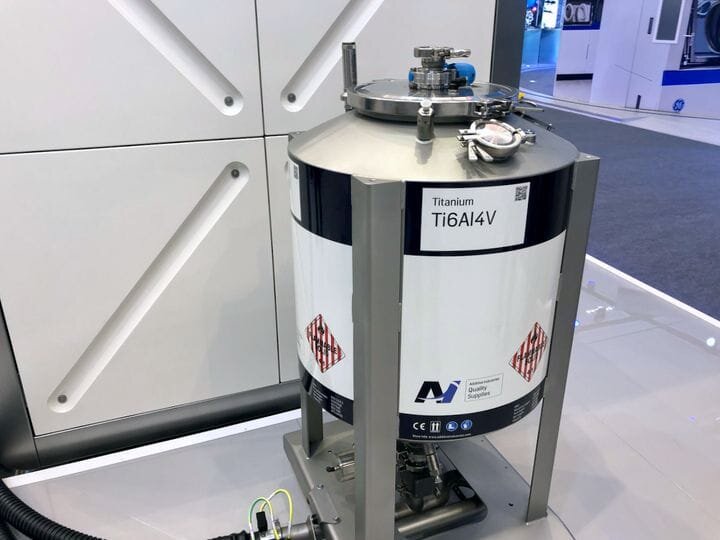![Larger configuration of Additive Industries’ MetalFAB1 metal 3D printer [Source: Fabbalop]](https://fabbaloo.com/wp-content/uploads/2020/05/additive-industries-metalfab1-long-1_img_5eb08c84737b4.jpg)
Additive Industries is one of our favorite companies to follow and we were happy to obtain information on their latest developments.
I’ve often referred to the Netherlands-based company as a metal 3D printing startup, but really at this stage they are not a startup any longer. Their aggressive strategy to gain a “top 3” position in the metal 3D printing market is still underway, but now they say they are “currently 7th”.
That’s not something a startup company could say or do.
Additive Industries Update
![Sample metal 3D prints from Additive Industries’ MetalFAB1 metal 3D printer [Source: Fabbalop]](https://fabbaloo.com/wp-content/uploads/2020/05/additive-industries-metal-parts-1_img_5eb08c84dfe37.jpg)
Here’s some of what we heard from them:
-
They expect to double sales levels once again this year
-
Their current staff complement is a huge 130 people, and they currently have no less than 22 vacancies
-
They plan on opening a UK manufacturing site some time in 2020
-
They’ve opened a manufacturing site in Singapore, and it’s strangely located on the 9th floor of an otherwise typical office building
-
They’re expecting to introduce an “entry-level” system in 2021
-
They have partnered with the Fraunhofer Institute to jointly improve their technology
In addition they had a number of technical announcements:
![New powder handling unit from Additive Industries [Source: Fabbalop]](https://fabbaloo.com/wp-content/uploads/2020/05/image-asset_img_5eb08c852b6e4.jpg)
-
They’ve introduced a new powder loading tool that, with 175L capacity, ensure powder is never exposed to the atmosphere
-
A new system upgrade improves gas flow via new nozzles and exhausts
-
The upgrade also includes better laser control through software calibrations and improved job estimates
Additive Industries Strategy
![Smaller configuration of Additive Industries’ MetalFAB1 metal 3D printer [Source: Fabbalop]](https://fabbaloo.com/wp-content/uploads/2020/05/image-asset_img_5eb08c857a4e6.jpg)
But what is truly fascinating to me is their take on strategy. Additive Industries now sees their market changing. While they began, as all metal 3D printer companies do, with the magical triplet of automotive, aerospace and medical industries, they now see different markets on the horizon.
The three main metal 3D printing consuming industries could be said to be early adopters of the technology due to their peculiar needs and financial structures. However, after the early adopters are exhausted in a market, the “chasm must be crossed” into less mature industries if growth is to be maintained.
Additive Industries sees their future clients as having less maturity in additive manufacturing, perhaps even with no experience at all. That’s part of the reason they intend on introducing an entry level model in the future, but it’s also why they are establishing manufacturing sites worldwide: curious prospects can visit the sites and learn how it works with the experts. It’s much like how an Apple Store works, except with big metal gear.
What are these new markets? Additive Industries sees tooling, oil & gas, general machine building, spare parts and other high tech systems as their new market targets. Each of these has very different financials and capabilities than the original three industries, and Additive Industries seems to be adapting themselves to address them.
AM Quality Co-op
One very intriguing development is their announcement of a co-op for clients to procure and manage consumables.
Additive Industries says that many of their clients source their input metal powders for 3D printing from elsewhere, mostly in order to prepare their own unique alloy mixes. However, this implies that each client then must embark on a ton of work to perform that sourcing. Additive Industries has determined that this is a major cost factor when examining the total costs of operation, and the new co-op concept attempts to address that.
The non-profit co-op will jointly procure supplies of metal powder and leverage the power of all participants together. The plan is to contract with a limited set of suppliers to gain the best pricing, and then ensure quality through all steps afterwards.
Powder will be provided in standard packaging for traceability, and will be highly consistent in quality.
Participants will reduce their risk because client operations can assume a continuous supply of powder from the co-op, while the co-op assumes the supplier risk and mitigates it by diversifying supplies between several providers.
The co-op will perform other services, too, such as accepting used powder for re-blending, performing specimen testing, and even some types of post-processing.
One key goal of the new co-op will be to share investment for the development of new materials. This will likely enable participants to gain access to new materials that they would otherwise be unable to afford on their own.
Participating in the co-op apparently will initially require a two-year commitment and will enable attendance and voting at member meetings.
I’m continually impressed with how Additive Industries focuses so deeply on their clients and their needs. The new co-op concept is certainly yet another example of how Additive Industries gets that done.
Via Additive Industries

